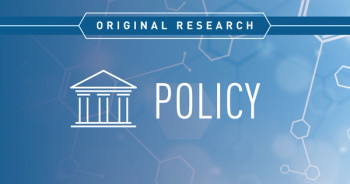
Supplements and Featured Publications
- Improving Members’ Outcomes Across the Continuum of Diabetes: Assessing the Impact of New Measures
- Volume 13
- Issue 2 Suppl
CME/CE Questions
Continuing Pharmacy Education Accreditation The Bimark Center for Medical Education (BCME) is accredited by the Accreditation Council for Pharmacy Education (ACPE) as a provider of continuing pharmacy education (No. 799). This program is acceptable for 2.0 hours (0.2 CEU) of continuing education credit in states that recognize ACPE-accredited providers. The ACPE Universal Program Number for this program is 799-000-07-002-H01.
Continuing Medical Education Accreditation
AMA PRA
Category 1 CME credits
BCME designates this educational activity for a maximum of two (2) â„¢. Physicians should only claim credit commensurate with the extent of their participation in the activity.
INSTRUCTIONS FOR RECEIVING CREDIT
To receive credit, participants must read this publication in its entirety, complete the evaluation form and post test, and achieve a passing score of 70% or better. There is no fee to participate in this activity. All post tests should be completed at the BCME Testing Center, which is available online at www.bcmeonline.com. All statements of credit will be issued via e-mail. Please be sure to include your current e-mail address on the Answer and Credit Registration form, either at the back of this supplement or online. If you use the hard copy form, mail or fax it to:
Initial Release Date: April 1, 2007
Expiration Date: April 1, 2008
1. Which one of the following statements is true?
- Most physicians change therapy immediately when patients record high glycosylated hemoglobin (A1C) levels.
- There are no Internet resources available to help patients and physicians with diabetes care.
2. Unmet needs of conventional therapy do not include agents that __________.
- are not associated with weight gain
- control postprandial glucose
3. Which one of the following statements about postprandial glucose is true?
- It is the major contributor to A1C levels when A1C is <7.3%.
- It mirrors preprandial glucose in diabetic patients.
4. Which of the following interventions has been shown to reduce the risk of type 2 diabetes in high-risk adults?
- Metformin
- All of the above
5. According to the American Diabetes Association and American College of Endocrinology/American Association of Clinical Endocrinologists recommendations, how often should A1C levels be tested in patients with controlled diabetes?
- Once yearly
- Quarterly
6. National Diabetes Quality Improvement Alliance public reporting measures for adult diabetes do not include percentages of patients __________.
- who received 1 or more lipid tests
- with elevated fasting plasma glucose
7. Conventional combinations of oral hypoglycemic agents __________.
- have long-term efficacy
- are always ineffective at lowering A1C levels
8. Binding to which of the following proteins prolongs the activity of insulin detemir and helps minimize fluctuations in absorption rates?
- Albumin
- Beta-2-microglobulin
9. The major side effect associated with the Exubera formulation of inhaled insulin powder is __________.
- skin rash
- autoimmune diseases
10. Pramlintide should only be given to patients who are receiving treatment with which of the following agents?
- Statin therapy
- Insulin
11. Exenatide binds to which of the following?
- Glucagon-like peptide-1 (GLP-1) receptor
- Membrane of pancreatic beta cells
12. With respect to weight, exenatide __________.
- promotes weight gain
- is associated with weight loss that plateaus at approximately 12 weeks
13. Sitagliptin increases endogenous incretin levels by __________.
- creating an albumin-bound compound that resists degradation
- inhibiting kinase activity
14. Incretin mimetics and incretin enhancers have been shown to _________.
- cause weight gain
- improve pancreatic beta cell function
15. Nonadherence to antidiabetic medications __________.
- is associated with increased hospitalization and mortality
- cannot be affected by changes in pharmacy benefits
16. The study of population-based risk factors associated with high-cost health benefit utilization at Pitney Bowes found that __________.
- older employees were responsible for most costs
- no factors could be identified to explain the high costs
17. When Pitney Bowes moved medications for chronic conditions to the lowest (least expensive) tier of the pharmacy benefit plan __________.
- total pharmacy costs per person dropped dramatically
- the average employee health cost was reduced by half
18. There is a strong connection between copayments, adherence to therapy, and improved patient outcomes.
Do not agree Strongly agree
1 2 3 4 5 6
19. Newer agents need to be considered earlier in the management of diabetic patients with poor glycemic control.
Do not agree Strongly agree
1 2 3 4 5 6
20. Results from the Pitney Bowes benefits design model have shown that novel benefit designs are necessary to improve health outcomes in patients with chronic diseases.
Do not agree Strongly agree
1 2 3 4 5 6
Articles in this issue
over 18 years ago
New Technologies and Therapies in the Management of Diabetesover 18 years ago
State of Diabetes Care in the United Statesover 18 years ago
Guidelines and Performance Measures for Diabetesover 18 years ago
Participating FacultyNewsletter
Stay ahead of policy, cost, and value—subscribe to AJMC for expert insights at the intersection of clinical care and health economics.









































